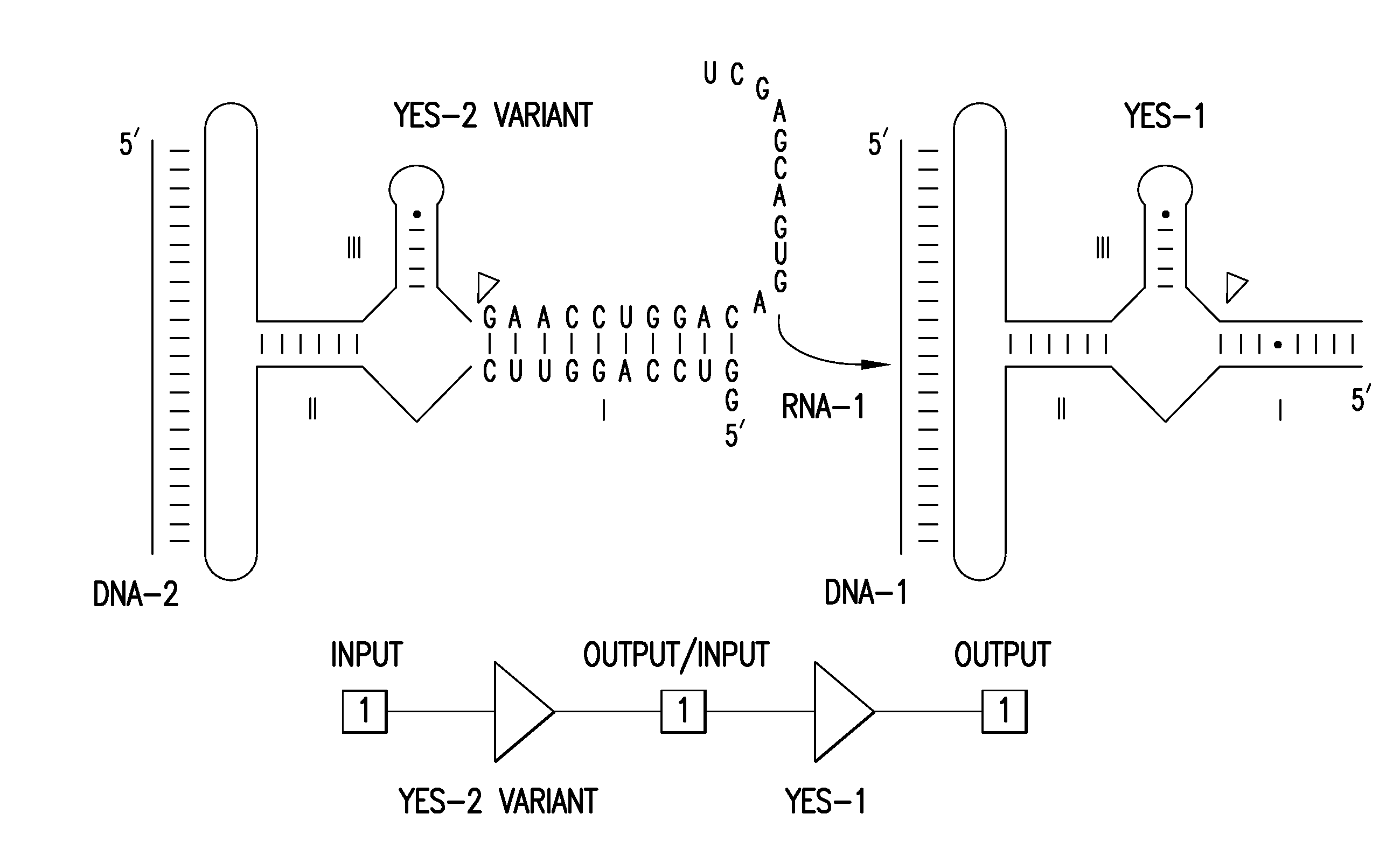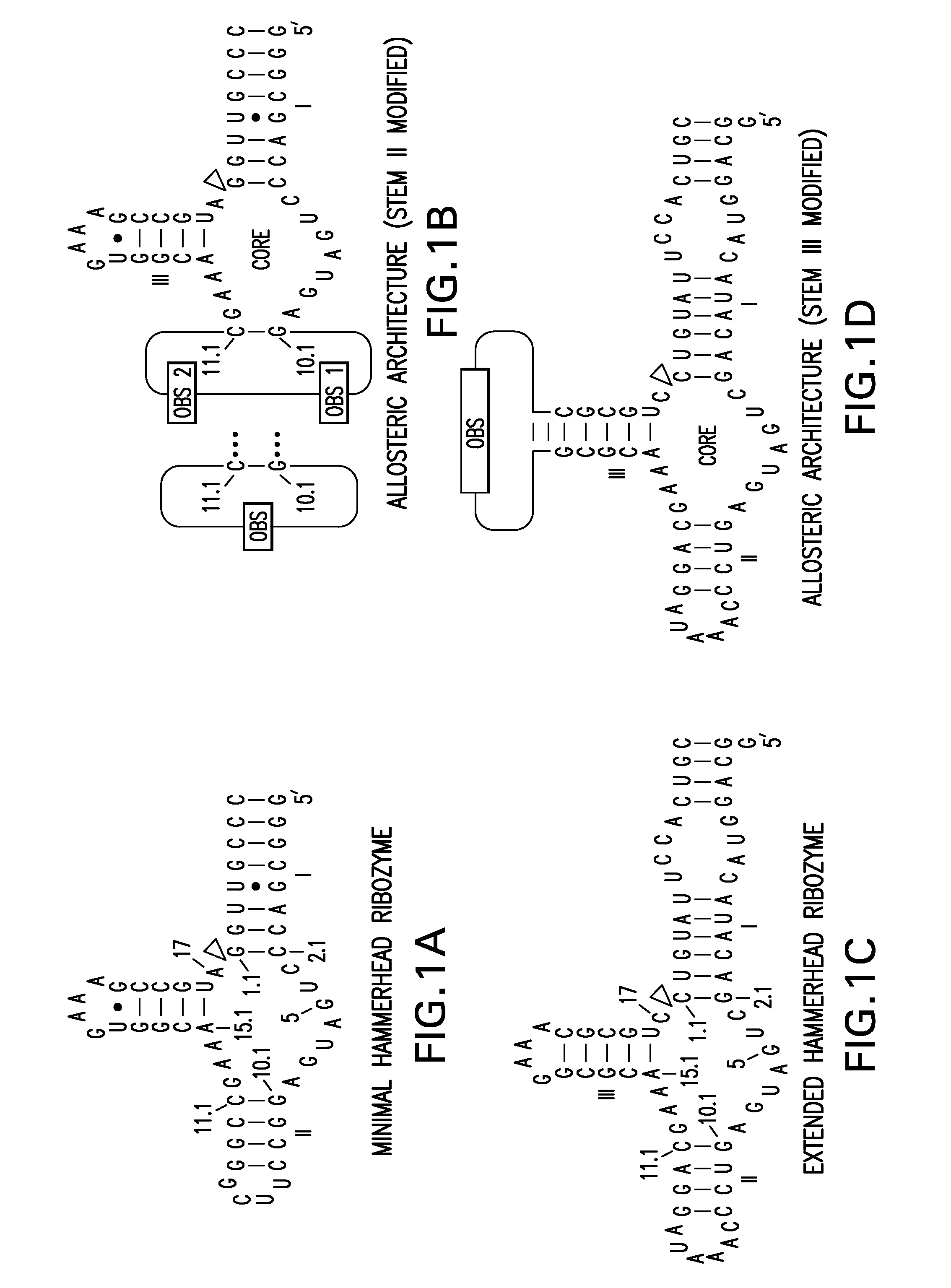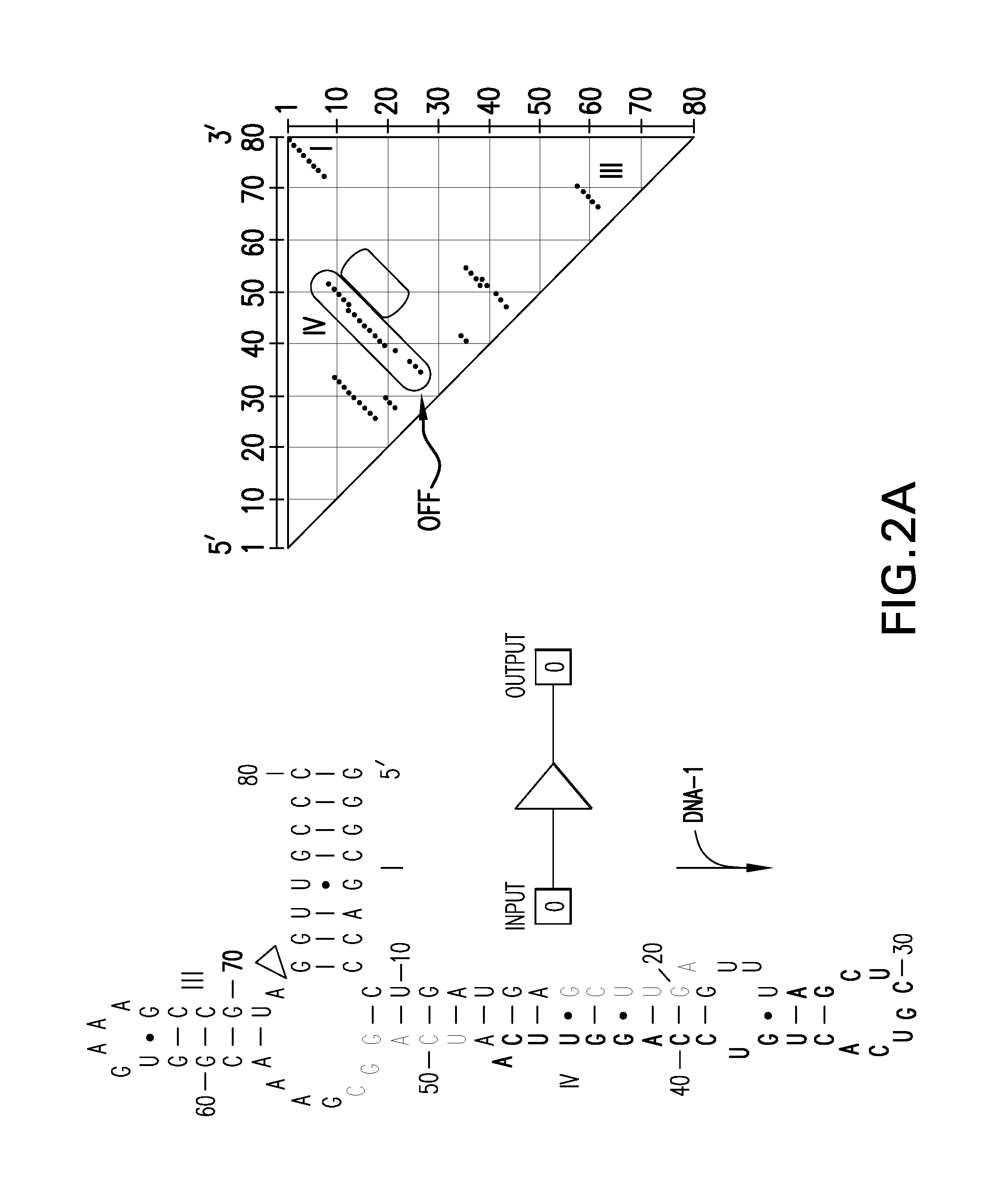Computational design of ribozymes
a ribozyme and computational technology, applied in the field of nucleic acid design, can solve problems such as the problem of designing allosteric nucleic acids
- Summary
- Abstract
- Description
- Claims
- Application Information
AI Technical Summary
Benefits of technology
Problems solved by technology
Method used
Image
Examples
examples
A. Example 1: Computational Design and Experimental Validation of Oligonucleotide-Sensing Allosteric Ribozymes
[0100]A partition function algorithm (McCaskill 1990) was used to design RNAs that are predicted to form a dominant secondary structure in the absence of an oligonucleotide effector. This folded pattern can be distinct from the secondary structure that dominates in the presence of a matched oligonucleotide effector. The algorithm computes the entire ensemble of possible secondary structures as a function of temperature (Bonhoeffer 1993), which allows the user to choose to build only those constructs that are predicted to exhibit the desired molecular switch characteristics.
[0101]This automated design method can be used to generate a large number of allosteric ribozymes with predefined properties within hours by assessing millions of different sequences on a personal computer. The utility of this method is disclosed herein by designing and testing four universal types of mole...
PUM
 Login to View More
Login to View More Abstract
Description
Claims
Application Information
 Login to View More
Login to View More - R&D
- Intellectual Property
- Life Sciences
- Materials
- Tech Scout
- Unparalleled Data Quality
- Higher Quality Content
- 60% Fewer Hallucinations
Browse by: Latest US Patents, China's latest patents, Technical Efficacy Thesaurus, Application Domain, Technology Topic, Popular Technical Reports.
© 2025 PatSnap. All rights reserved.Legal|Privacy policy|Modern Slavery Act Transparency Statement|Sitemap|About US| Contact US: help@patsnap.com



